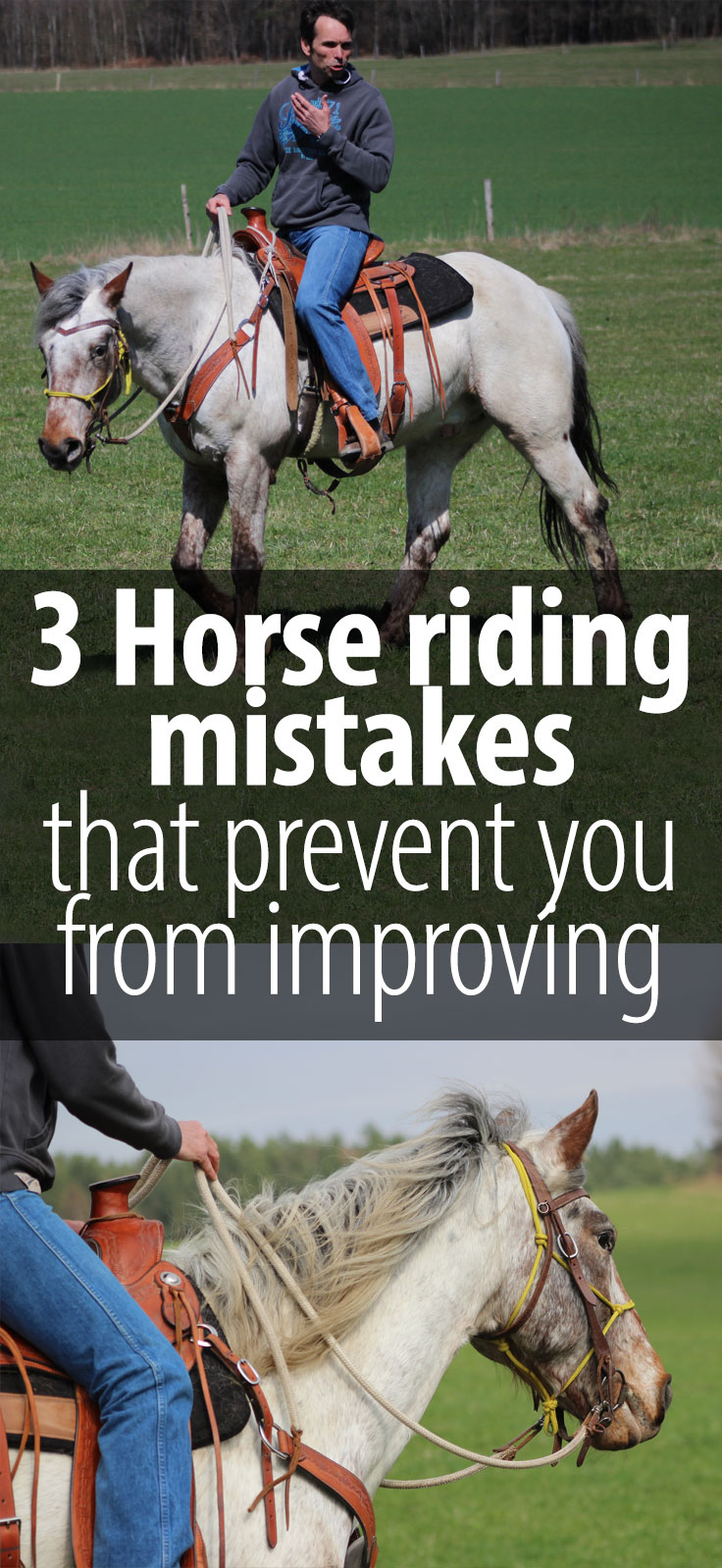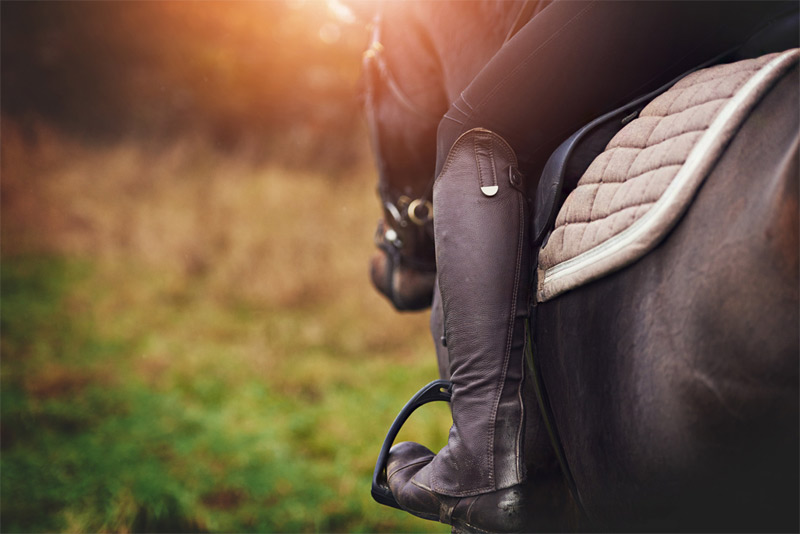
Introduction
Horse riding is a popular and exhilarating activity enjoyed by people of all ages and skill levels. Whether you are a beginner or an experienced rider, these horse riding tips will help you improve your riding skills and ensure a safe and enjoyable experience.
1. Wear the Right Gear

Before hopping on a horse, it's crucial to wear the proper gear. This includes a well-fitted helmet, riding boots with heels, comfortable pants, and a suitable riding shirt. Wearing the right gear will protect you from potential injuries and enhance your overall riding experience.
2. Get to Know Your Horse

Take the time to build a bond with your horse and understand its temperament and behavior. Each horse is unique, so learning how to communicate and establish trust with your horse is essential for a successful ride.
3. Mounting and Dismounting

When mounting a horse, approach calmly from the left side, hold the reins in your left hand, and place your left foot in the stirrup. Push yourself up using your leg strength and swing your right leg over the horse's back. To dismount, reverse the process by swinging your right leg back over the horse's back and landing softly on the ground.
4. Maintain Proper Posture

Maintaining proper posture while riding is crucial for balance and control. Sit up straight, with your shoulders back and relaxed, and your heels down. Engage your core muscles to maintain stability and avoid slouching or leaning forward.
5. Use Appropriate Rein Length

The length of your reins plays a significant role in controlling your horse. Too loose reins can result in a lack of control, while overly tight reins can cause discomfort for the horse. Maintain a light and consistent contact with the horse's mouth, allowing for clear communication.
6. Practice Proper Leg Position

Position your legs correctly by keeping them relaxed and close to the horse's sides. Avoid gripping too tightly with your knees, as this can hinder your balance and communication with the horse. A proper leg position will help you maintain stability and communicate effectively with your horse.
7. Use Your Seat

Your seat is an essential tool for communicating with your horse. Sit deep in the saddle and move with the horse's rhythm. Use subtle shifts in your weight and hips to indicate the desired direction or speed changes. A well-balanced seat will help you establish a connection with your horse.
8. Master the Walk Before Trotting

Start by mastering the walk before progressing to faster gaits like trotting or cantering. The walk allows you to establish a connection with your horse, practice your balance, and refine your aids. Once you feel comfortable at the walk, you can gradually introduce trotting into your rides.
9. Learn Proper Turning Techniques

When turning your horse, use the appropriate aids such as direct or indirect rein pressure, leg cues, and shifts in your weight. Start with wide turns and gradually progress to tighter turns as you and your horse become more proficient. Proper turning techniques will make your rides smoother and more controlled.
10. Be Mindful of Your Surroundings

Always be aware of your surroundings while riding. Look out for potential hazards, such as low branches, uneven terrain, or approaching vehicles. Being mindful of your surroundings will help you anticipate and avoid any potential dangers.
11. Gradually Increase Riding Time

If you're a beginner, it's important to gradually increase your riding time to allow your muscles to adapt and avoid overexertion. Start with shorter rides and gradually extend the duration as your fitness level improves. Listen to your body and take breaks if needed.
12. Practice Control at Different Speeds

Practice maintaining control of your horse at different speeds. Start with a walk, then gradually introduce trotting and cantering. Develop your ability to regulate your horse's speed and maintain balance and control throughout each gait.
13. Learn Emergency Stop Techniques

It's crucial to learn emergency stop techniques to ensure your safety and the safety of your horse. Practice pulling back on the reins and using your voice command for a quick stop. These emergency stop techniques can be useful in unexpected situations.
14. Stay Calm and Relaxed

Horses are highly sensitive animals and can sense your emotions. It's important to stay calm and relaxed while riding, as any tension or anxiety can transfer to your horse. Take deep breaths, maintain a positive mindset, and enjoy the experience.
15. Always Warm Up and Cool Down

Before and after each ride, make sure to warm up and cool down your horse. Start with gentle exercises and stretches to prepare their muscles for the ride and help prevent injuries. After the ride, gradually reduce the intensity and allow your horse to cool down properly.
16. Stay Hydrated

Remember to stay hydrated while riding, especially during hot weather. Bring a water bottle with you and take regular sips throughout the ride. Dehydration can affect your focus and overall well-being, so it's essential to keep yourself and your horse hydrated.
17. Observe Proper Stable Etiquette

When riding at a stable or equestrian center, it's important to observe proper stable etiquette. Clean up after yourself and your horse, respect other riders' space, and follow any rules or guidelines set by the facility. Being considerate and responsible will contribute to a positive riding environment.
18. Ensure Proper Tack Fit

Check that your horse's tack, including the saddle, bridle, and girth, fits properly and does not cause discomfort or pain. Ill-fitting tack can lead to discomfort for the horse and hinder your communication and control. Regularly inspect and adjust your tack as needed.
19. Take Regular Lessons

Regardless of your riding level, taking regular lessons with a qualified instructor can greatly enhance your skills. They can provide guidance, correct any errors, and help you progress as a rider. Continuous learning and improvement are key to becoming a proficient horse rider.
20. Listen to Your Horse

Pay attention to your horse's body language and cues during the ride. Horses communicate through subtle movements and expressions, so it's important to listen and respond accordingly. This will strengthen your partnership with the horse and ensure a harmonious riding experience.
21. Be Patient and Persistent

Learning to ride a horse takes time and practice. Be patient with yourself and your horse, as progress may come gradually. Stay persistent in your efforts, and don't get discouraged by setbacks. With dedication and perseverance, you will continue to improve and enjoy your horse riding journey.
22. Respect Nature and Wildlife

While horse riding, respect the natural environment and wildlife around you. Stick to designated trails, avoid littering, and minimize your impact on the surroundings. By being mindful of the environment, you can help preserve the beauty for future riders.
23. Stay Updated on Safety Measures

Stay updated on the latest safety measures and guidelines for horse riding. This includes wearing safety vests, using reflective gear for riding at night, and understanding first aid techniques for both you and your horse. Prioritize safety to ensure a pleasant and secure riding experience.
24. Take Breaks and Rest Days

Allow yourself and your horse regular breaks and rest days to prevent fatigue and avoid overworking. Horse riding can be physically demanding, so listen to your body and give yourself time to recover. This will help you maintain your enthusiasm and prevent burnout.
25. Enjoy the Journey

Above all, remember to enjoy the journey and have fun while horse riding. Appreciate the bond you develop with your horse, the connection with nature, and the sense of freedom that comes with riding. Embrace every ride as an opportunity to grow and create beautiful memories.
Conclusion
Horse riding is a rewarding and enjoyable activity that offers numerous physical and mental benefits. By following these horse riding tips, you can enhance your skills, ensure your safety, and have a wonderful riding experience. So, saddle up and embark on your horse riding adventure!